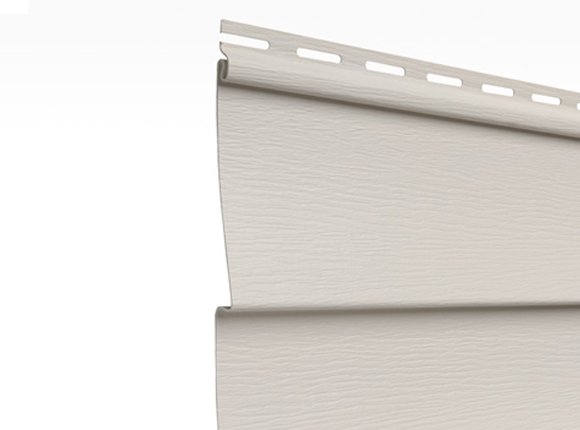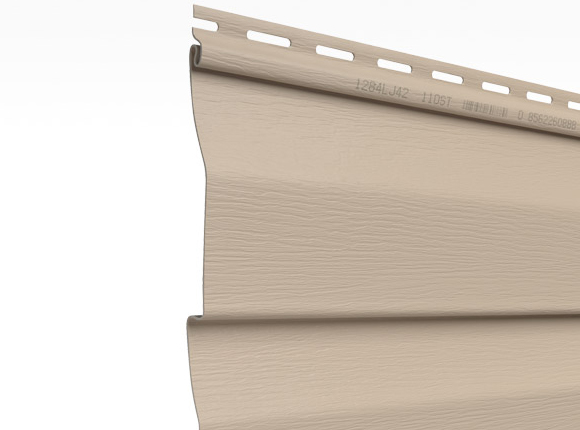Attachment Points
How siding panels attach to your home greatly affects their resistance to tear offs in high winds. A “nail hem” locks one siding panel to another and allows the panel to be securely nailed into place. There are three different types of nail hems.

Single Nail Hem
Found on economy panels and offers adequate attachment. Comprised of a single layer of material with nail slots, it is the weakest option against nail withdrawal and wind load strength.

Partially Curled Nail Hem
Found on better panels, this option reinforces the areas most prone to breaking under negative wind load pressure.

Fully Curled Nail Hem
You’ll find this on premium panels – it’s the strongest form of attachment. Because the thickness of the entire upper hem is doubled, pressure during negative wind load is dispersed.
Upper and Lower Locks
Locks work with the nail hems to keep panels in place. Under the nail hem is the “upper lock”. At the bottom of each panel is the lower lock. Upper and lower locks create strong interlocks between panels. If durability is important to you, make sure you select the most strongly secured panels.

Larger Channel Locks
Channel-type locks are best, as they run straighter on the wall and snap into place. This creates a strong interlock, keeping panels tight under high winds. Some manufacturers offer more complexly designed locks which increase locking strength and panel straightness.

Bottom Lock/Return Legs - Reinforced Curls
Similar to a channel lock, these have an increased curl that has been reinforced, which adds more strength to the panels and the attachment points.
Wind Sucks, Literally
Wind resistance as it applies to Vinyl Siding is not so much about how hard the wind is blowing outside, but about the negative wind pressure flowing through your home, which creates a suction effect between the siding and the exterior walls. Many panels meet VSI Vinyl Siding Product Certification Program guidelines, and are rated to withstand high winds from 110 mph – 150 mph or even as high as 190 mph, and the pressure that results.
Color That Wows and Lasts
Never having to paint is a good thing: Enjoying a lifetime of vibrant color, despite extreme temperatures and weather conditions, is even better. Many vinyl siding manufacturers offer products in a wide range of popular colors with a durable, fade-resistant finish. But all finishes are not the same.
Extreme Performance Testing
Have the products you’re considering been tested to perform? Was it actually tested out in the elements (desert, tropics, extreme cold) or in a lab? Other than weather, what else did they do to test the resilience of the pigment? The Vinyl Siding Institute requires an outdoor weathering study to be conducted for every color manufactured before they will certify its fade resistance. Today, there are over 350 certified colors.
